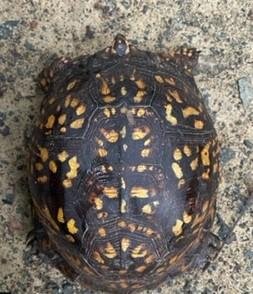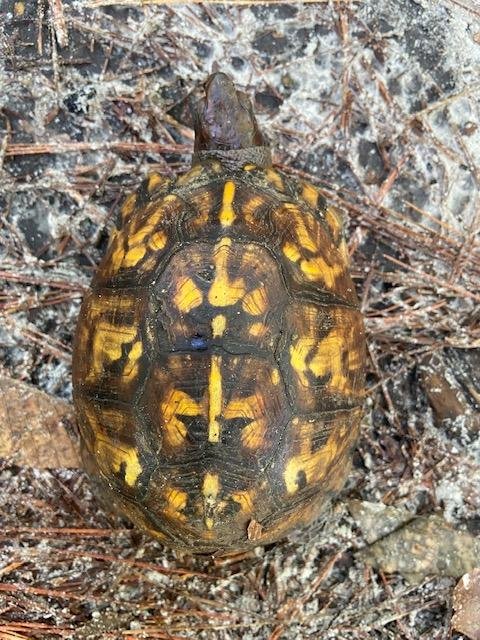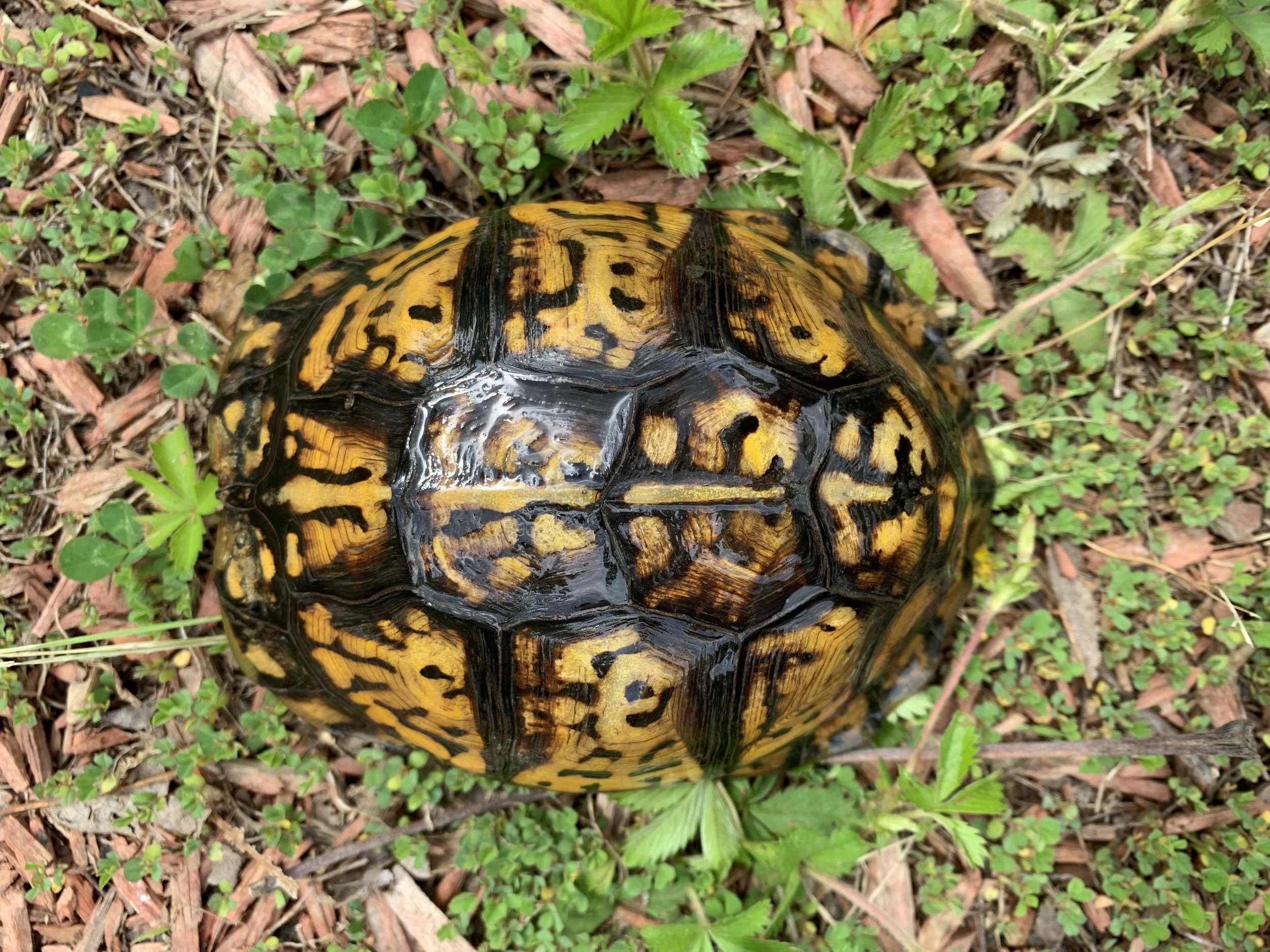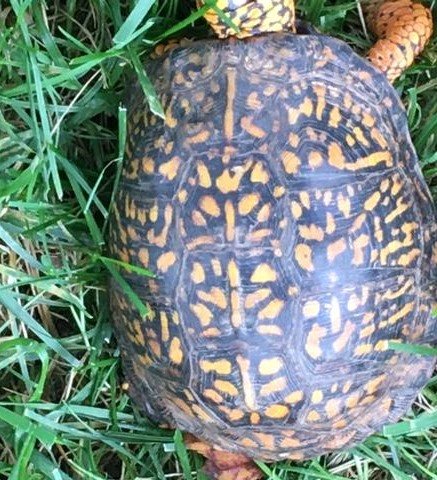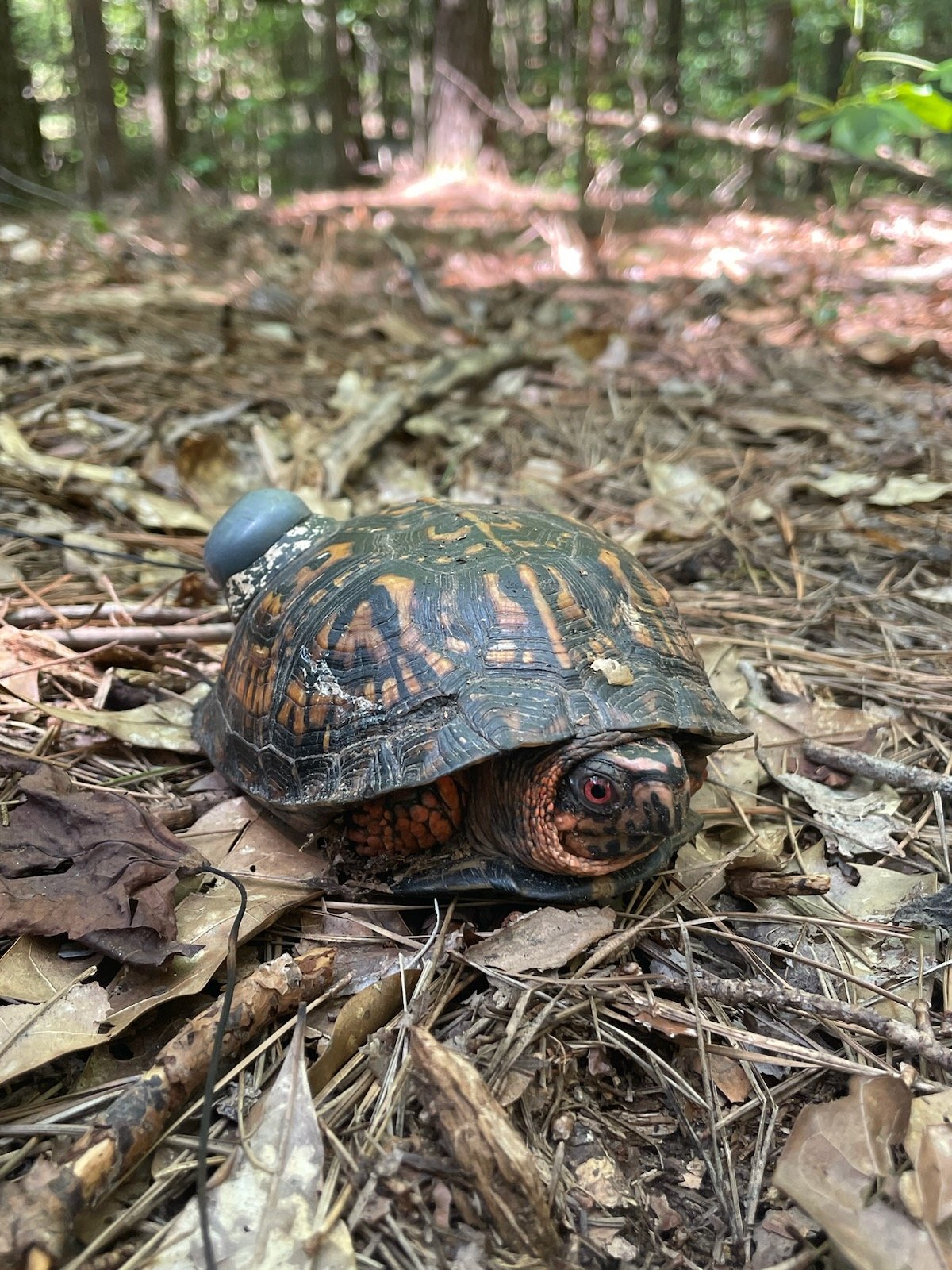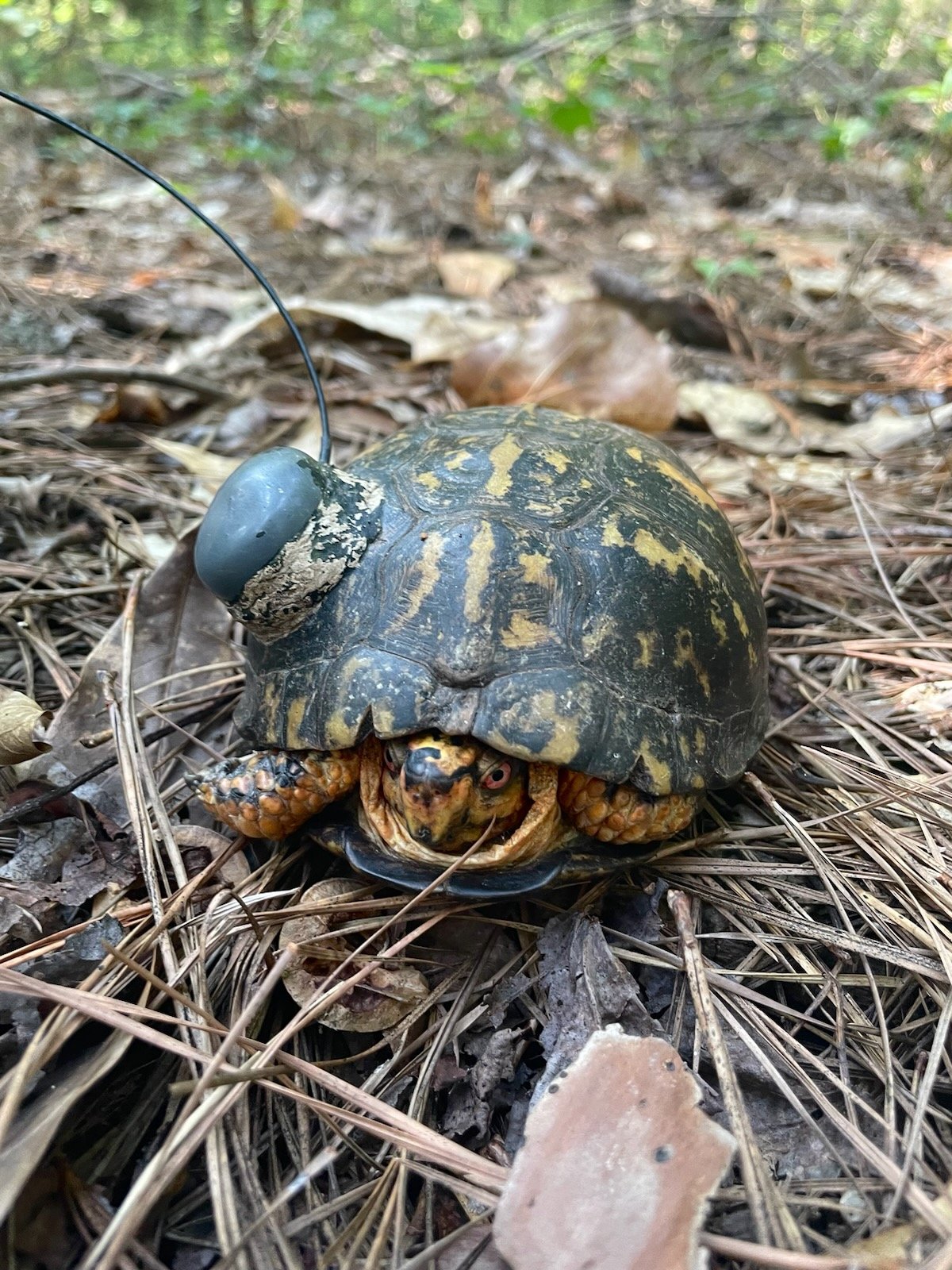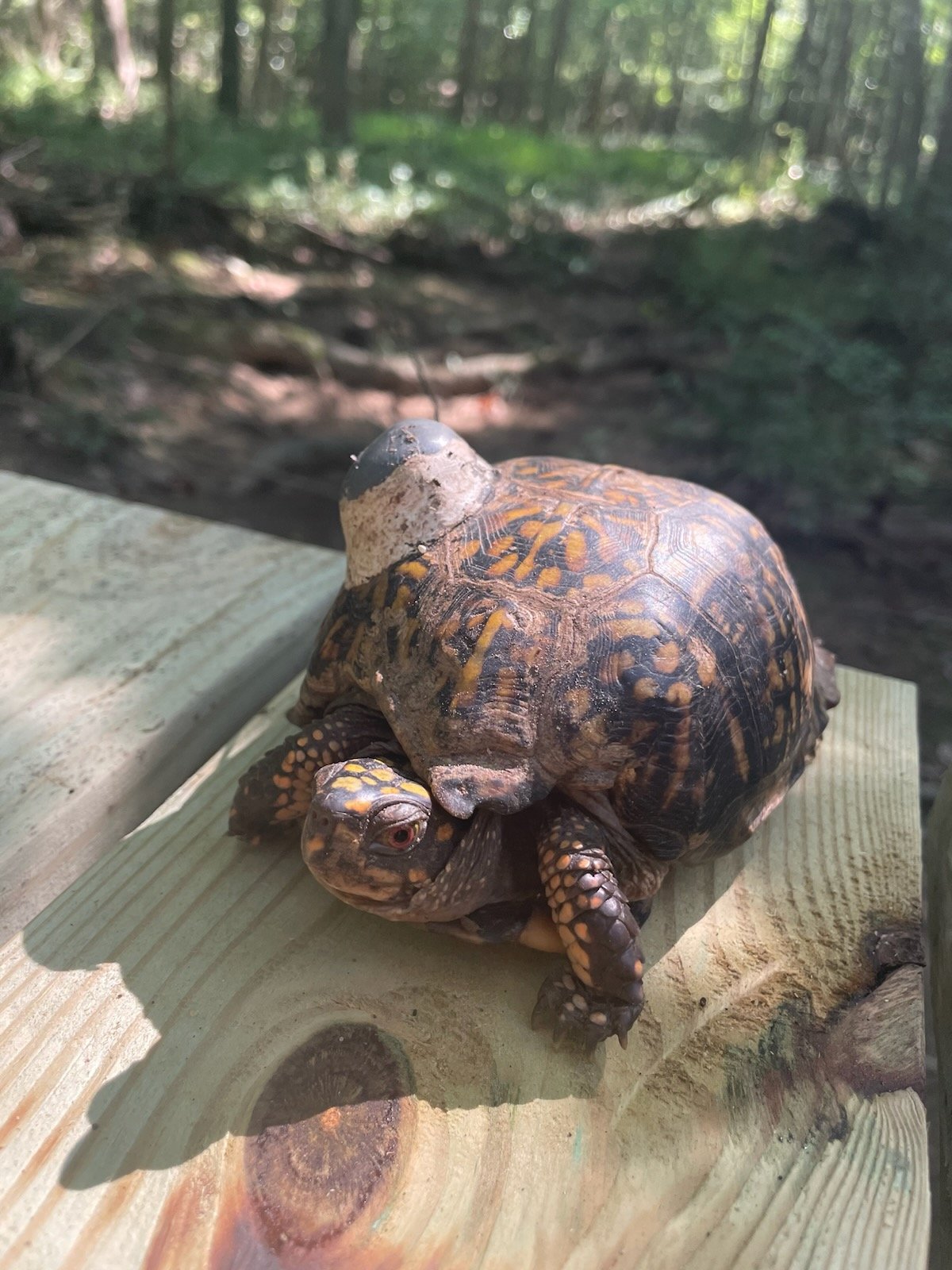BOX TURTLE RESEARCH
Want to come to Piedmont Wildlife Center and experience our research first-hand? Book a Turtle Trek with us and we’ll show you all the ins and outs of turtle tracking while we travel through the woods of Leigh Farm Park.
Updates
Thank you!
As 2023 begins to come to a close and the box turtles enter brumation, we want to thank you for sending in 184 shellfies this year!
Your photos will continue to be used to develop and improve AI recognition to help us monitor eastern box turtle populations across NC.
What is brumation?
As the weather cools down for the arrival of winter, box turtles will seek out places to burrow and wait out the cold months.
During this time, they enter a state called brumation in which their metabolism slows and they are mostly inactive but still capable of moving around if needed.
Why study box turtles?
The eastern box turtle (Terrapene carolina carolina) is in decline. They are currently classified as Vulnerable by the IUCN Red List, meaning that their population size is decreasing and the species is at risk of extinction in the wild.
How do we study box turtles?
CITIZEN SCIENCE
become a turtle trekker!
The eastern box turtle, North Carolina’s state reptile, is in decline across the state. As of 2011, the IUCN has classified eastern box turtles as a vulnerable species (i.e. likely to become endangered unless circumstances are improved). We need your help to find, photograph and monitor eastern box turtles in or near neighborhoods, your place of work, and other urban areas!
We are working in association with WildTrack and the UC Berkeley School of Information using Artificial Intelligence to analyze these photos and identify individuals for non-invasive monitoring of box turtles throughout NC.
Why AI?
What are the differences between these two turtles’ shells? How can you tell if they’re separate individuals or the same turtle? Using artificial intelligence (AI), we can develop a tool that acts similarly to our own visual comparisons of turtles, but at a much faster rate.
What’s a Shellfie?
To develop accurate AI, you need to train it. This is done by giving it many examples of the kind of data you want it to be able to process. The more examples it has to build on, the better it gets at understanding new data. That’s where Shellfies - and you - come in! A Shellfie is a close up photo of a box turtle’s shell. With each Shellfie taken, the AI is able to be improved.
HOW TO TAKE A SHELLFIE
Take two or more photos centered directly over the turtle. Take the photos as up close as possible with the entire top of the shell still visible.
You can also take additional photos of the turtle from slightly different angles, but still overhead.
Do not include non-standardized objects for scale
Do not take the photo from any angle other than above
Do not take the photo from too far away
Should I include a ruler in the photo?
In the past, we asked project members to include a ruler in the photo as a standardized scale. With the new AI tool, having a scale in the photo is no longer absolutely necessary but can still be useful if you happen to have one on hand.
New turtle trekkers submission website!
WildTrack is a non-profit organization that develops non-invasive wildlife monitoring methods using morphometric (size and shape) data as well as AI modeling. The photos collected by Turtle Trekkers are analyzed by WildTrack and used to improve an AI tool that can recognize individual turtles.
To use the new WildTrack website to submit your turtle photos, you’ll need to register for a WildTrack account. Then you can login, navigate to New Observation, and use the drop down menus to add information about your turtle photos and upload the photos to the website.
Don’t want to create a WildTrack account, but still want to participate in Turtle Trekkers? Email us your turtle photos instead! You can send them to:
turtle@piedmontwildlifecenter.org
How do I know if it’s a box turtle?
Patterns and coloration will vary, but eastern box turtles have clawed feet (not as webbed as aquatic turtles) and should be able to close up in their shell, even if they aren’t doing so when you find them.
Box turtles can close up entirely inside their shell, like this one is preparing to.
Box turtles may have brown, pale red, or bright red eyes. Their shell and body can be brown, yellow, red, and/or orange.
Still not sure if it’s a box turtle? That’s ok, send us your Shellfie anyways!
Radio Telemetry
There are currently 6 wild turtles living at Leigh Farm Park outfitted with radio transmitters. Each week, the turtles are located using a receiver and data is collected on their location, behavior, and the weather.
Take a closer look at each turtle’s movements throughout the park:
GIS Story Map created by Lauren Rooney, PWC Conservation Intern 2023.
Mark-Recapture
To expand our monitoring efforts, we also use a mark-recapture survey method to study more turtles in the park in partnership with the Box Turtle Connection, a long-term study on box turtles in North Carolina . When a new turtle is found, it is given a small, non-invasive mark that allows us to identify it as a unique individual.
To date, we have marked over 250 eastern box turtles and are always adding more!
Measuring shell height
How can the data be used?
Learn more about what’s been happening with box turtle populations across NC in this article by Roe, Graeter, LaVere, and Somers (2021):





